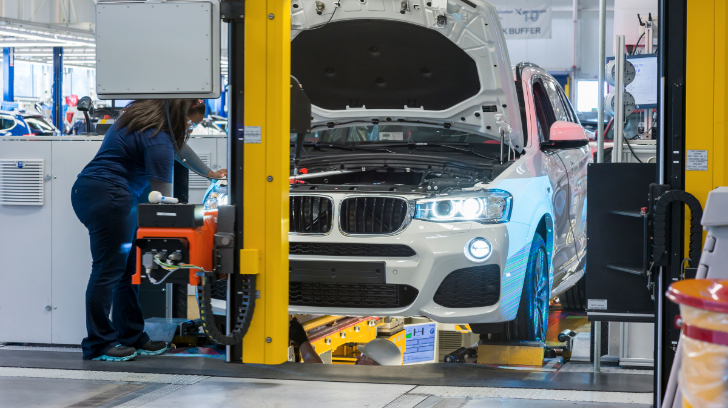BMW is currently looking to improve their eco-friendly approach in every way possible. To do this, they designed a new program called Industry 4.0 in which they created and implement new technologies and approaches towards the car making business.
Their latest development in this regard is called the Intelligent Energy Management Data System or iEMDS for short. What it does is measure the electricity consumption using intelligent counters that constantly quantifies how much the production facilities and robots are eating up and align them with a central big data network of the company.
That big network includes all 30 facilities in 14 countries around the world. This way, the company can see early on when deviations happen, leading to excess consumption. Moreover, the data helps to prevent imminent disruptions or even breakdowns of individual production facilities or robots, thus ensuring the required premium quality of the vehicle production.
The goal of all this hard effort is to reduce the electricity consumption by 45 percent by 2020 compared to the levels recorded in 2006. In 2013, the company was able to decrease consumption by 31 percent already but the remaining 14 percent will require even bigger efforts.
According to BMW’s estimates, the iEDMS is supposed to save around 7 percent annually. If that’s the case, they might very well reach the target by 2020.
In just a few weeks, the system proved its worth reducing energy consumption by nearly 25 percent. Together with further optimization activities, the continuous monitoring of the three facilities via iEMDS resulted in total energy savings of over 100,000 kilowatt hours in the first year.
Other advantages of the new system include preventing imminent breakdowns of robots and facilities and creating new facilities that are adapted to the plant’s specifics that could be influenced by the climate (i.e. the Araquari plant in Brazil and San Luis Potosi in Mexico).
That big network includes all 30 facilities in 14 countries around the world. This way, the company can see early on when deviations happen, leading to excess consumption. Moreover, the data helps to prevent imminent disruptions or even breakdowns of individual production facilities or robots, thus ensuring the required premium quality of the vehicle production.
The goal of all this hard effort is to reduce the electricity consumption by 45 percent by 2020 compared to the levels recorded in 2006. In 2013, the company was able to decrease consumption by 31 percent already but the remaining 14 percent will require even bigger efforts.
According to BMW’s estimates, the iEDMS is supposed to save around 7 percent annually. If that’s the case, they might very well reach the target by 2020.
The Spartanburg plant was used as a lab rat
Over the years, the iEMDS will be implemented in all of BMW’s facilities around the world but at first it was only introduced in the US Spartanburg plant. It was back there where it was first used back in 2012, for more than 80 production facilities and robots.In just a few weeks, the system proved its worth reducing energy consumption by nearly 25 percent. Together with further optimization activities, the continuous monitoring of the three facilities via iEMDS resulted in total energy savings of over 100,000 kilowatt hours in the first year.
Other advantages of the new system include preventing imminent breakdowns of robots and facilities and creating new facilities that are adapted to the plant’s specifics that could be influenced by the climate (i.e. the Araquari plant in Brazil and San Luis Potosi in Mexico).











